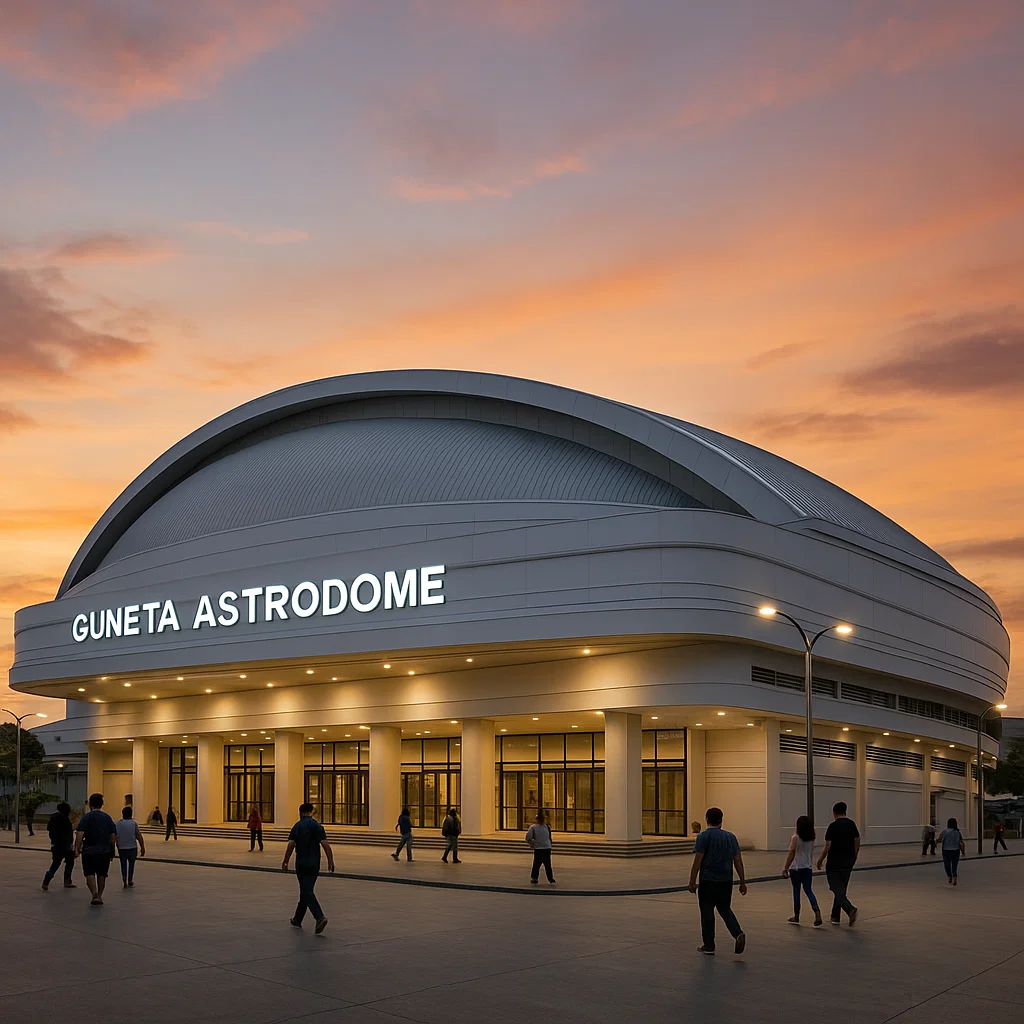The Cuneta Astrodome, one of Pasay City’s most iconic landmarks, has undergone several renovation phases over the years to modernize its facilities and improve visitor experience. From sports events to concerts, the Astrodome remains a hub for entertainment and culture. This article details the comprehensive timeline of cuneta astrodome renovations, highlighting key milestones, upgrade phases, and the broader impact of these improvements.
Early Years and the Need for Renovation
Originally inaugurated in 1993, the Cuneta Astrodome served as a premier indoor venue for basketball games, particularly the Philippine Basketball Association (PBA). As the years passed, signs of aging infrastructure began to surface. By the early 2010s, local government officials and stakeholders recognized the necessity of facility upgrades to ensure safety and enhance functionality for modern events. This early realization set the groundwork for the initial proposals that would eventually lead to a series of venue renovations.
Phase 1: Structural Repairs and Seating Improvements (2015–2016)
The first phase of cuneta astrodome renovations officially began in 2015, focusing primarily on structural integrity and comfort. The seating arrangement was redesigned to increase capacity slightly while also improving sightlines for spectators. Dilapidated bleachers were replaced, and VIP sections were introduced to cater to more high-profile events. In addition to physical repairs, attention was given to accessibility upgrades, ensuring compliance with modern building standards.
According to Philippine News Agency, this phase was funded by the Pasay City Government and was part of a broader urban development initiative.
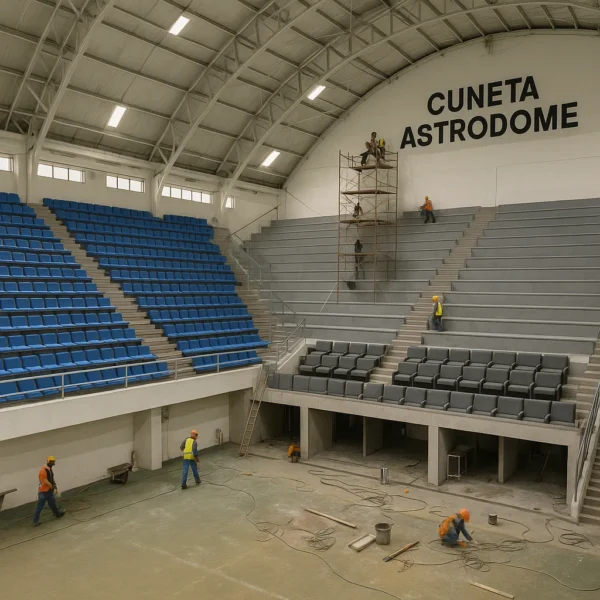
Phase 2: Lighting, Acoustics, and Event Technology (2017–2018)
The second wave of facility upgrades at Cuneta Astrodome focused on enhancing its lighting systems, sound design, and digital infrastructure. Installed in 2017, the LED lighting system replaced outdated halogen fixtures, drastically improving energy efficiency and visual clarity for both live audiences and televised broadcasts. Acoustic insulation was also upgraded, making the venue more suitable for concerts and non-sporting events.
One of the most notable improvements was the integration of a digital scoreboard and media screens, aligned with global standards. These upgrades positioned the venue to better accommodate international events and private rentals. According to Spot.ph, the upgrades helped attract more diverse event bookings in subsequent years.
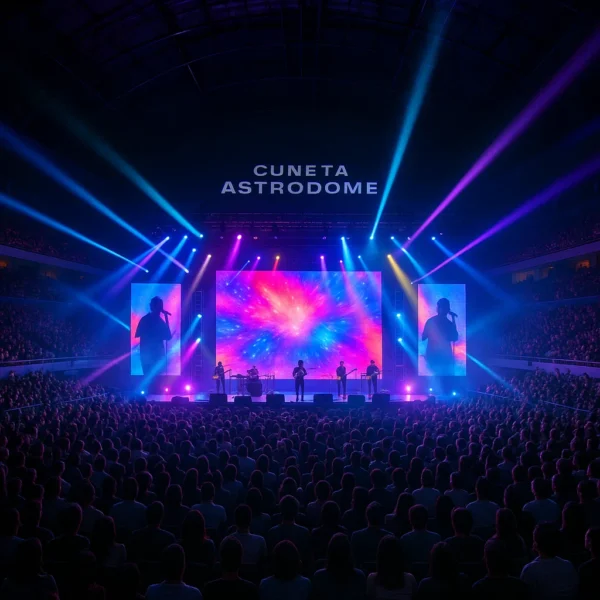
Phase 3: HVAC and Customer Amenities (2019–2020)
Continuing the cuneta astrodome renovations, the third phase centered on indoor climate control and spectator comfort. By 2019, the need for a more robust HVAC (Heating, Ventilation, and Air Conditioning) system became urgent, especially given the Philippines’ tropical climate and the high density of event attendees. A state-of-the-art cooling system was installed, ensuring stable temperatures throughout the venue regardless of outside weather conditions.
This phase also saw major improvements in restroom facilities, food concession areas, and entry/exit efficiency. Enhanced ventilation in restrooms and expanded food counters helped reduce crowding and improved the overall guest experience. As reported by Inquirer.net, these upgrades contributed to a spike in revenue and repeat bookings.
Phase 4: Digital Integration and COVID-Era Adaptations (2021–2022)
The fourth phase of cuneta astrodome renovations was heavily influenced by the global COVID-19 pandemic. In 2021, digital ticketing and contactless entry systems were introduced to minimize physical interaction. QR code-based admission, temperature scanning stations, and sanitation tunnels were installed at key access points, aligning with health protocols imposed nationwide.
Moreover, the venue adopted hybrid event capabilities—allowing simultaneous live audiences and online streaming. This opened up opportunities for broader audience engagement even with physical distancing restrictions. The Manila Times reported that the upgrades helped Pasay sustain event operations safely and adaptively during pandemic recovery stages.
Phase 5: Sustainability and Green Initiatives (2023–2024)
As environmental awareness grew, the fifth phase of cuneta astrodome renovations introduced a sustainability component. Beginning in early 2023, solar panels were installed on the roof to reduce the facility’s reliance on traditional power sources. Rainwater harvesting systems were also added to support restroom operations and landscaping without overburdening city water supplies.
Waste segregation bins and recycling programs were implemented across the venue, encouraging proper disposal behaviors among eventgoers. According to a feature by Rappler, these changes not only reduced the environmental impact but also attracted sustainability-conscious organizers and sponsors.

Current State and Strategic Direction (2025)
As of 2025, the Cuneta Astrodome stands as a fully modernized, multi-use facility that blends heritage with innovation. With over a decade of venue renovations completed, the site now competes with newer arenas in Metro Manila in terms of both features and booking rates. The upgrades have helped increase annual visitor traffic and event hosting capacity significantly.
Recent developments include further integration with city-wide transportation plans and the implementation of smart building technology for lighting, ventilation, and crowd control. The Philippine Star reports that Pasay’s local government aims to position the Astrodome as a central hub for sustainable, accessible events well into the next decade.
Economic and Social Impact of Renovations
The extensive cuneta astrodome renovations have contributed to the economic vitality of Pasay City and its surrounding communities. With upgraded amenities and better logistics, the venue has become a preferred site for both local and international organizers. Increased event frequency has directly supported small businesses, including hotels, restaurants, and transportation services in the vicinity.
In a recent report by BusinessWorld, Pasay’s tourism revenue saw double-digit growth following the final phases of upgrades. Moreover, the renovations have also played a role in civic pride, turning the once-outdated structure into a revitalized landmark and community gathering space.
Renovation Timeline Summary
| Year | Renovation Focus |
|---|---|
| 2015–2016 | Structural repairs, seating upgrades, accessibility improvements |
| 2017–2018 | Lighting systems, acoustics, digital screens |
| 2019–2020 | HVAC overhaul, restrooms, food stalls, guest amenities |
| 2021–2022 | COVID-19 adaptations, digital ticketing, hybrid event support |
| 2023–2024 | Solar panels, rainwater collection, waste management |
| 2025 | Smart building integration, transport connectivity |
Frequently Asked Questions (FAQ)
What is the seating capacity of the Cuneta Astrodome after renovations?
The Cuneta Astrodome now seats approximately 12,000 people with upgraded comfort and accessibility features.
Can the Cuneta Astrodome host international events?
Yes, it is equipped with digital infrastructure, multilingual signage, and accessibility options for global audiences.
What technology upgrades were added to the Astrodome?
Upgrades include smart lighting, hybrid streaming support, QR-based ticketing, and advanced crowd control systems.
Does the Astrodome follow green building initiatives?
Yes, it features solar panels, water recycling systems, and eco-waste management as part of its green retrofit.
Who is responsible for managing the Cuneta Astrodome?
The venue is operated by the Pasay City Government in partnership with private event organizers.
Conclusion.
The transformation of the Cuneta Astrodome over the last decade exemplifies how thoughtful planning and phased development can breathe new life into aging infrastructure. From structural repairs to cutting-edge sustainability features, each stage of the cuneta astrodome renovations was driven by a clear vision—making the venue future-ready while honoring its legacy.
With continuous investment from the Pasay City Government and support from stakeholders, the Astrodome is now more than a sports arena. It is a community hub, a cultural landmark, and a model for smart venue renovations across the Philippines. As technology and society evolve, so too will this iconic space—standing resilient, relevant, and ready for the years to come.
Post-Renovation Event Highlights
Following the extensive cuneta astrodome renovations, the venue has hosted an impressive array of events that reflect its renewed capabilities. From national basketball league matches and international concerts to graduation ceremonies and large-scale expos, the Astrodome has become a flexible venue for diverse audience needs.
In 2023, it served as the central location for the Metro Manila Youth Expo, a high-profile event that attracted over 15,000 attendees across three days. The seamless handling of logistics and technology at this event was widely praised, with organizers citing the venue’s upgraded sound systems and air conditioning as key factors in attendee satisfaction.
Later that year, K-pop group Stray Kids included the Astrodome in their world tour, highlighting its relevance to global performance circuits. The event sold out within hours, a testament to the site’s modern appeal and its improved booking ecosystem. These high-impact events validate the long-term value of the city’s infrastructure investments.
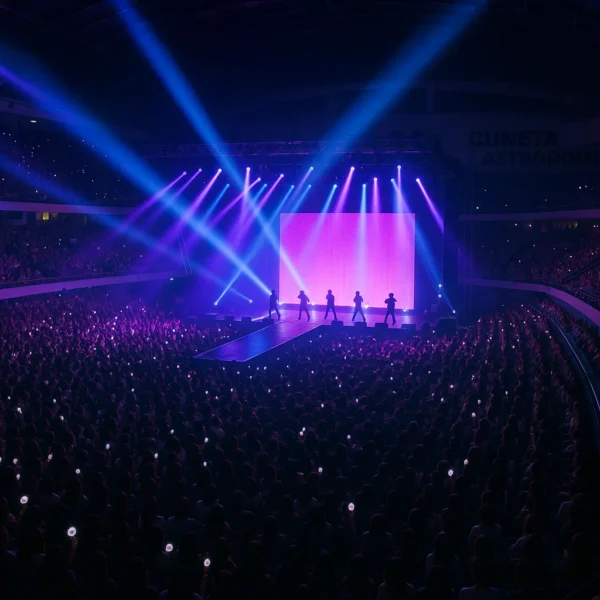
Expert Opinions and Stakeholder Quotes
The successful execution of cuneta astrodome renovations has drawn praise from urban planners and government officials alike. Architect Elvira Santos, who consulted on the redesign of the facility’s VIP lounges, emphasized the importance of respecting the venue’s original architecture while implementing modern materials and layouts. “We didn’t want to erase its character—we wanted to elevate it,” she said in a Pasay City development forum.
City Councilor Jerome T. Dizon, who helped champion funding for Phases 4 and 5, noted: “The Astrodome is now a smart venue. It’s adaptive, energy-efficient, and worthy of our city’s growth.” He added that future planning will focus on creating surrounding green spaces and possibly linking the Astrodome to Pasay’s pedestrian-friendly pathways under the city’s long-term mobility blueprint.
Venue operator and event planner Corazon Lim also shared positive feedback: “Turnaround times for set-up and teardown have improved drastically. Clients feel they’re working with a world-class venue now, not just a retro stadium.”
Comparison with Other Metro Manila Venues
When compared to other popular venues in Metro Manila—such as the Mall of Asia Arena and Araneta Coliseum—the Cuneta Astrodome offers a unique balance of affordability, accessibility, and heritage charm. While MOA Arena boasts larger capacity and more advanced acoustics, it also comes with significantly higher rental costs, making Cuneta a viable option for mid-scale events that require logistical ease and cost efficiency.
The Araneta Coliseum, on the other hand, shares a similar vintage appeal but has not undergone the same comprehensive upgrades in sustainability and digital infrastructure. Cuneta’s recent facility upgrades make it a strong contender in the region’s event space hierarchy, particularly for organizers who value modernization without sacrificing identity.
This combination of history and innovation gives the Astrodome a strategic niche, appealing to both nostalgic audiences and next-generation performers who appreciate upgraded back-end support and green policies.
Community Engagement and Cultural Relevance
Beyond its function as an events venue, the Cuneta Astrodome serves as a cultural anchor for Pasay residents. Over the years, it has hosted local government programs, free public health clinics, disaster response operations, and even served as a vaccination site during the pandemic. These uses have deepened its connection with the community, giving the space a role beyond entertainment.
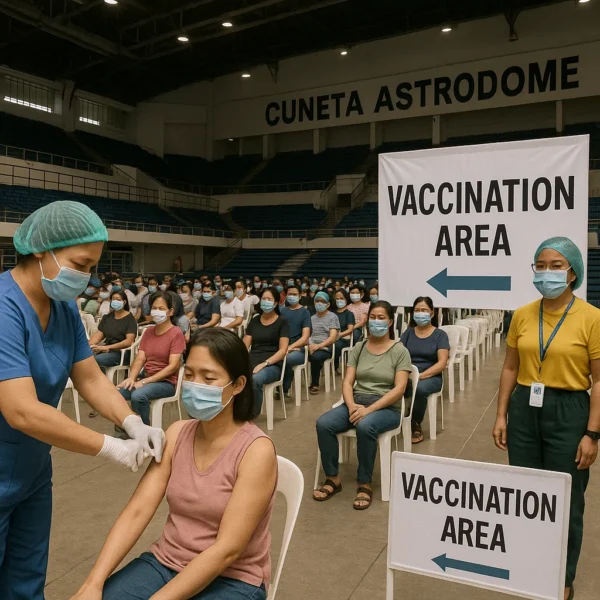
Annual barangay sports tournaments, educational symposiums, and cultural festivals are now regularly booked at the venue, taking advantage of the improved facilities. For many residents, the Astrodome is not just a place to watch professional events—it’s part of their lived experience and collective memory.
This level of community involvement also boosts civic pride, reinforcing the value of continuous investment in public infrastructure. The success of the cuneta astrodome renovations stands as a model for transforming legacy structures into modern, multi-use community assets.
Upcoming Plans and Long-Term Vision
While the major phases of cuneta astrodome renovations have concluded, Pasay City officials continue to outline ambitious goals for the facility’s future. Planned enhancements include full integration with the city’s proposed light rail expansion, allowing for seamless commuter access from across Metro Manila.
There is also discussion of building a multi-level parking structure adjacent to the venue to address growing traffic and accessibility concerns. Event organizers have advocated for an on-site event tech center where hybrid production teams can manage live and remote operations in real-time.
Environmentally, future retrofits may include expanded solar coverage and “cool roof” technology to further reduce the building’s thermal load. The city government is also exploring the idea of hosting annual innovation summits and civic leadership conferences at the Astrodome, reinforcing its role as a thought leadership venue and not just an entertainment space.
Visitor Testimonials and User Experience
Feedback from attendees across various events has been overwhelmingly positive since the cuneta astrodome renovations were completed. Maria Lourdes, a concertgoer from Quezon City, shared, “I’ve been coming to events here since I was a kid. The upgrades are amazing—restrooms are cleaner, seats are more comfortable, and the air conditioning really makes a difference.”
Event staff and security personnel have also noted smoother operations due to better crowd control systems and communication equipment. For many, the improvements are not just cosmetic—they’ve fundamentally improved how people feel and move within the space.
During a college graduation in 2024, students praised the new sound system and clear visibility from upper seats. Parents and guests found the entry and exit process faster and more orderly compared to past experiences. These anecdotal accounts align with formal survey results conducted by the venue, showing a 92% satisfaction rate across accessibility, comfort, and overall ambiance.
Impact on Pasay’s Identity and City Branding
The revitalization of the Cuneta Astrodome has played a strategic role in reshaping Pasay City’s public image. Once considered a dated and underutilized facility, the Astrodome is now highlighted in official tourism brochures and city branding campaigns. Its transformation is frequently cited in investment briefings and infrastructure showcases, proving that legacy projects can be repositioned as modern assets.
Government officials report that inquiries from foreign delegations and potential investors often include requests to tour the Astrodome. It has become a flagship example of how Pasay balances cultural heritage with forward-thinking development. Educational institutions and urban planning conferences have used the Astrodome as a case study on adaptive reuse and phased modernization strategies.
In essence, the cuneta astrodome renovations extend far beyond the venue’s walls—they contribute to Pasay’s evolving identity as a progressive, resilient, and culturally rich city at the heart of Metro Manila.
Plan Your Next Event at the Cuneta Astrodome
Whether you’re organizing a live concert, corporate gathering, educational expo, or community celebration, the Cuneta Astrodome offers a flexible and modern space that meets your needs. Thanks to years of cuneta astrodome renovations, the venue is now one of Metro Manila’s most adaptable event locations—balancing capacity, technology, and cultural legacy.
For booking inquiries, you can reach the official Pasay City events office or visit the venue’s updated website for virtual tours, floor plans, and availability calendars. Discover firsthand why local organizers and international promoters continue to choose the Astrodome.
Be part of the new chapter in Pasay’s story—host your next milestone at a venue that honors the past and embraces the future.
Did You Know? Astrodome Trivia & Legacy Facts
- The Cuneta Astrodome was named after the Cuneta family, a prominent political family in Pasay, and is one of the few city-owned arenas in the Philippines.
- It was the longtime home of the Philippine Basketball Association (PBA) from 1993 to 2004 before the league moved to larger venues.
- During the COVID-19 pandemic, the venue was temporarily repurposed into a mega swabbing and isolation facility to support national health efforts.
- The Astrodome has hosted concerts by OPM legends like Sharon Cuneta and Regine Velasquez, as well as foreign acts like Westlife and Super Junior.
- With each phase of renovation, the venue remained operational, setting an example of continuous-use modernization in the public sector.
Through a combination of heritage preservation, sustainable design, and digital modernization, the Cuneta Astrodome has proven that public infrastructure can evolve meaningfully over time without losing its soul. It is not just a venue—it’s a symbol of Pasay’s vision for inclusive progress.

